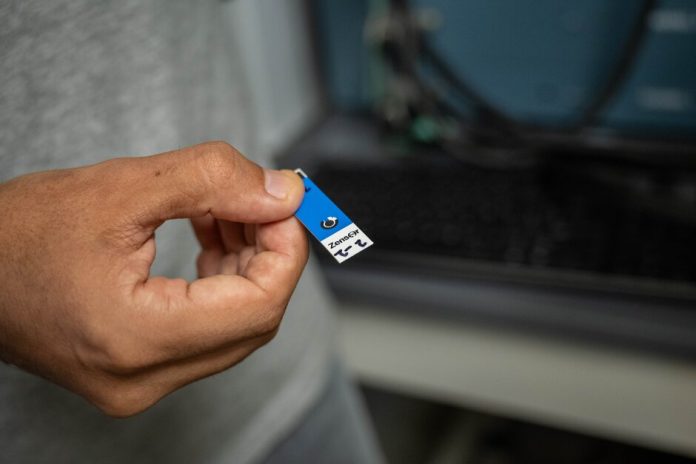
Hydrogen is often called the fuel of the future.
It burns cleanly, leaving only water behind, and many countries are betting on it to power cars, factories, and entire industries.
But while hydrogen is a promising source of renewable energy, it also comes with hidden dangers.
Because hydrogen gas is invisible, odorless, and tasteless, leaks can go unnoticed until it’s too late—sometimes leading to accidents, explosions, or environmental damage.
Detecting leaks quickly and reliably is one of the biggest safety challenges in the hydrogen economy.
Most sensors available today are expensive, don’t last long, and can’t catch small leaks fast enough to keep people safe. That’s where Xiangqun Zeng, a researcher at the University of Missouri, comes in.
Zeng and her team recently unveiled a new hydrogen sensor that is not only small and affordable but also highly sensitive and fast.
In tests, the sensor was able to detect even the tiniest leaks within seconds. Their work, published in ACS Sensors, could be a game-changer for industries moving toward cleaner energy.
The device itself is impressively tiny—about the size of a fingernail. Despite its small size, it is packed with advanced materials that make it powerful.
Zeng built the sensor by combining crystals made of platinum and nickel with ionic liquids, a special kind of material that helps capture hydrogen molecules. The result is a sensor that is more durable and accurate than anything currently on the market.
“Hydrogen can be tricky to detect since you can’t see it, smell it, or taste it,” Zeng explained. “Our goal is to create sensors that are smaller, more affordable, and able to work continuously in real time.”
The new sensor isn’t just sensitive; it’s also highly selective. That means it can tell hydrogen apart from other gases in the environment, reducing the chance of false alarms. It also promises stability, lasting longer than existing options, which is important for safety systems that need to run around the clock.
Although the device is still being tested in the lab, Zeng hopes to bring it to the market by 2027. Her research is supported by Mizzou’s upcoming Energy Innovation Center, which will open in 2028 and serve as a hub for clean energy breakthroughs.
For Zeng, developing sensors that improve safety and protect the environment has been a lifelong mission. “For more than 30 years, I’ve focused on creating measurement technologies with the greatest impact on society,” she said. “If we’re going to detect explosive gases like hydrogen, it needs to happen in real time so we can keep people safe.”
With hydrogen becoming more central to the clean energy transition, having sensors that can act as tiny guardians against leaks could be vital for building a safer, greener future.



